
 Those of you who know my blogging tendencies, know that I wouldn’t pass up an opportunity to post about our favorite New Yorker! Waris Ahluwalia’s recent presence in Vogue (hat tip: Anandica) comes about as a contender for the prestigious CFDA/Vogue Fashion Fund award. The award helps emerging American designers pursue their design and business plans through financial support and professional mentoring. Waris Ahluwalia is one of only ten designers nominated for this award for his jewelry business, House of Waris. He states that his inspirations “have always been love and history. But I don’t claim to understand either of those.”
Those of you who know my blogging tendencies, know that I wouldn’t pass up an opportunity to post about our favorite New Yorker! Waris Ahluwalia’s recent presence in Vogue (hat tip: Anandica) comes about as a contender for the prestigious CFDA/Vogue Fashion Fund award. The award helps emerging American designers pursue their design and business plans through financial support and professional mentoring. Waris Ahluwalia is one of only ten designers nominated for this award for his jewelry business, House of Waris. He states that his inspirations “have always been love and history. But I don’t claim to understand either of those.”[Waris Ahluwalia] moved with his family from Amritsar, Punjab to Brooklyn, NY at the age of 5. He thought of becoming a doctor, a lawyer, risked one advertising interview, attempted to make a music magazine, got involved with a friend’s NGO for increasing HIV/ AIDS awareness in South Asia and found himself back in New York, immersed in the art life of the city. He then has a guy in New York make some jewellery for him, escapes the cold of the city for LA, helps a friend set-up a restaurant and one day, wanders into ultra-luxe boutique Maxfield’s where the owners spot his rings, immediately place an order, they sell out and House of Waris is born. [link]
The Anand MarriageAct has been discussed a few times on The Langar Hall. Years ago, I thought of the passage of the new act in Pakistan was one of the year’s greatest ‘successes’ by the community. In this year of 2009, the Sikh Research Institute plans to observe the ‘centennial’ of the Anand Marriage Act of 1909 in a big way.
Releasing a publication that can be viewed here and accompanied by the following the video with Harinder Singh, the PR campaign seeks to put limelight on the issue of Sikhs falling under the category of “Hindu” in the Indian Constitution. In fact it is emphatically stated in the publication.
Our hope in featuring this date in legislative history is to inspire Sikhs to demand acknowledgement as a distinct community, especially with regards to legal reforms.

While I believe the attempt is praiseworthy, an uncritical celebration of the colonist’s bill is also naïve and highly problematic.
What’s in the daal at the langar hall that makes it so yummy? Is it the shardhaa with which it is made or how it is allowed to slowly cook? Recently, I heard there was a CNN article on this issue by a South Indian (I am still trying to locate the article and will post the link soon), where the author attested to the speciality of the daal.
Recently, my mom raved about the daal at the Gurdwara. So what makes it special? I think its the shardhaa with which it is made. This shardhaa resonates in the way it is slowly cooked and how the spices are approximated before being thrown into the daal. It is also seen in the way it is served. The shardhaa with which we do any kind of seva, ultimately shows in the outcome. Often I have seen people who are doing tons of seva and wait for the recognition; while others have been doing the same seva for years and have made large leaps and bounds for our community without the same recognition. They never needed an organization, a job title, or a “following”-they just needed to see that fruit of their shardhaa (great work for our community). It is these individuals who should inspire us in doing seva. They fight for social justice issues, make langar for hundreds of Sikhs regularly, and clean the shoes of the sangat. However, you will rarely see them come to the forefront because they find their work more inspirational-it goes beyond who they are as individuals. Shardhaa- it’s that special ingredent that just makes seva extraordinary and unique-be it daal or social services.
I came across this video from a cultural event in Northern California. It features Ustad Lal Singh Ji Bhatti, among others, live on stage performing Boliyan and Tappe in his famous voice. You get to hear (and see) many folk instruments including the Sarangi, Tumbi, Algozey, Dhad, Chimta, Dhol, etc. We sometimes loose some of these instruments to the bass and background noise in todays remix culture…its nice to hear them center stage. Enjoy the videos after the fold.
How can Punjabi traditions, environmental awareness, and women’s space all be nurtured at the same time? Trinjan. Two organizations in Punjab recently teamed up to begin this. The Kheti Virasat Mission (KVM), 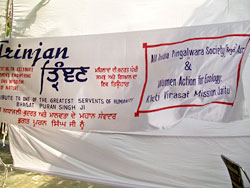 working towards sustainable agriculture, conservation of natural resources, environmental health and eco-sustainable technologies teamed up with Pingalwara, the org started by Bhagat Puran Singh in Amritsar as a refuge to care for those who had nowhere left to go. [Hat tip: Big B!]
working towards sustainable agriculture, conservation of natural resources, environmental health and eco-sustainable technologies teamed up with Pingalwara, the org started by Bhagat Puran Singh in Amritsar as a refuge to care for those who had nowhere left to go. [Hat tip: Big B!]
These two groups combined efforts to revive the lost tradition of Trinjan. KVM created a new initiative- the Women Action for Ecology to encourage women’s participation in an agro-ecological revival movement in Punjab.
From pictures on Pingalwara’s site, it seems that Pingalwara may have envisioned this first attempt at reviving Trinjan to be more a display of Punjabi traditions- natural foods, arts, and crafts. However a report from KVM envisions a much more active and central role for women in reviving Trinjan.
Since women are the first and worst victims of the agro-ecological crisis here and elsewhere, women need to work towards the mitigation process, for their own sake and for the sake of the community. Trinjan is an effort to mobilize women to appreciate their own traditional wisdom and role in the preservation and conservation of the environment in Punjab. Platforms for sharing of knowledge and spreading of practice are the main tool for empowerment of women in Trinjan. (emphasis added) [KVM report]
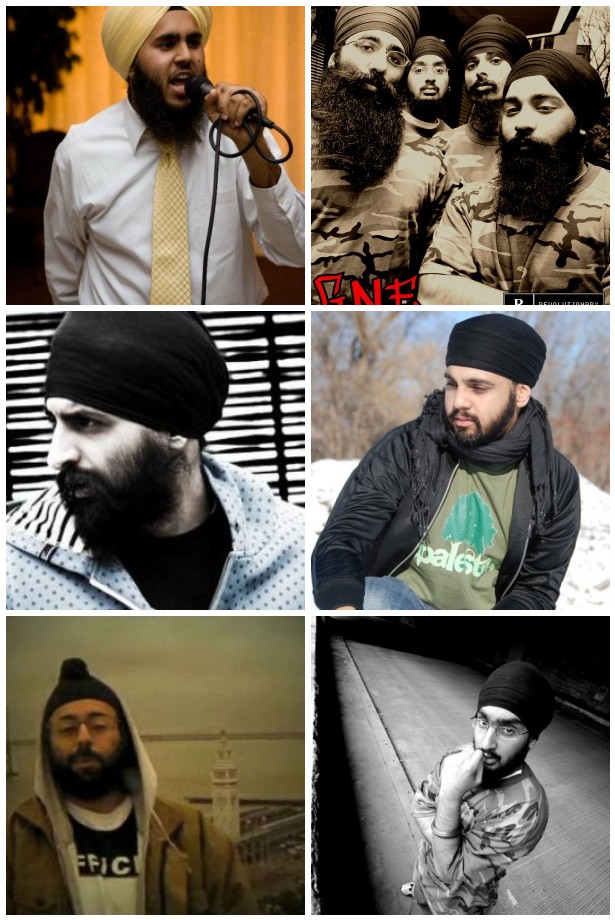 While everyone seems to be pretty excited about Kamaljit topping the Billboard charts – it seems that Jay Sean is not the only musician from our community who is gaining a ton of attention lately. In the October/November 2009 issue of East West magazine, an article by Navdeep Singh Dhillon titled, “The Brown Underground” discusses the five new names in hip-hop worth knowing. While on TLH we have featured these names in previous posts and are fans of their work – we wanted to highlight this new article as it provides a very intimate look at these artists. Musicians, rappers, emcees or whatever you may call them – they, at the end of the day, are regular guys (believe me, they are). They work, they go to school, they feel strongly about adversities that are going on all over the world. Unlike many, however, they are using their talent to channel that emotion into creativity and into their music. We definitely like what we’re hearing and whether they know it or not, these artists are paving a path for generations to come.
While everyone seems to be pretty excited about Kamaljit topping the Billboard charts – it seems that Jay Sean is not the only musician from our community who is gaining a ton of attention lately. In the October/November 2009 issue of East West magazine, an article by Navdeep Singh Dhillon titled, “The Brown Underground” discusses the five new names in hip-hop worth knowing. While on TLH we have featured these names in previous posts and are fans of their work – we wanted to highlight this new article as it provides a very intimate look at these artists. Musicians, rappers, emcees or whatever you may call them – they, at the end of the day, are regular guys (believe me, they are). They work, they go to school, they feel strongly about adversities that are going on all over the world. Unlike many, however, they are using their talent to channel that emotion into creativity and into their music. We definitely like what we’re hearing and whether they know it or not, these artists are paving a path for generations to come.
The article highlights the work of Canadian-based Humble the Poet and Sikh Knowledge, D.C.-based Saint Soulja of G.N.E., Hoodini from Los Angeles and Mandeep Sethi from San Francisco. You can read about their quest into this industry and how being a Sikh plays a role (or does not) in their music. What’s clear about these artists is that while they are Sikh, they don’t necessarily only rap about Sikh issues or only about issues affecting our community and that’s what makes them stand out in my mind. Injustice to any group is an injustice to humanity and as Sikhs, that is something we should resist. We can rest assured that these artists are having that dialogue.
20,000 Butchered in Delhi
25,000 Made “Disappeared” in Punjab
A Community Bruised
A Diaspora Tarnished
STILL WE RISE
A Nation Never Forgets
Remember 1984
On The Langar Hall, the fight for justice is rarely far from our minds. While justice remains elusive and mass-murderers promoted, the community suffers, but not in silence. In this 25th year of the Indian Government-sponsored pogroms, we bear witness to that genocide. We remember not only the lives lost, but call for accountability so that events such as Delhi 1984, Gujarat 2002, and the numerous human rights abuses that occur everyday in the territory that is India are not forgotten. The Indian elite may see the country as a rising economic star, but without political rights, freedoms, and a genuine commitment to justice, slogans such as “Indian Shining” fall on deaf ears.
Here is one such event that inspires us to remember:

Below the fold, see a list of upcoming events in your community. Participate, contribute, stand in solidarity – Remember 1984.
Sir Javai Te Javai, Mera Sikhi Sidak Na Javai
If I lose my head, so be it. But I must not lose my Sikhi.
After 16 months of tremendous effort and hundreds of thousands of dollars in spend, the Vismaad team brings us their fourth animated Sikh film, Bhai Taru Singh. We’ve blogged about the film before and about Bhai Taru Singh’s legacy. Now having had the privilege of watching the film last weekend, I’d like to share a few thoughts.
In years past, during the quickly cooling evening hours of dusk a Sikh child would huddle up next to their grandmother for the warm not only of her body and but also her captivating stories. Night after night, Beji would weave together real life tales of Sikh courage and bravery, instilling a sense of intrinsic pride, faith and determination that would provide a foundation of strength for young Sikhs in an unfriendly world.
But things have changed. Hectic schedules, disconnected families, ubiquitous technological distractions, and language issues have made these kind of life moments a rare occurrence. Whereas the Sikh panth has relied heavily on, and benefited from, its rich oral traditions, the current lack of intra-generational transference is a major concern. What are Sikhs without their history? Who else begins every supplication to the Creator by remembering and reflecting on their entire history? However, the Ardas we recite daily is only shorthand summary of our history, so what relevance does it hold, if you don’t actually know why we say charkrian de chare, aarye naal charai gaye, or sikhi kesan suasa naal nibhayi? So it is into this vacuum that a movie on Bhai Taru Singh attempts to fill a void.
As we head into Bandi Chod Diwas/Diwali/Deva Diwali weekend, let’s listen to President Obama’s message! I appreciate his genuine effort to wish the South Asian community a happy celebration. I’m very impressed that he said “Sikh” correctly! About time we have a US President who gets it!

My only qualm (of course I have one) is that he chose to call the entire celebration “Diwali”. Diwali is more part of the Hindu religious narrative than in Sikhi or Jainism (although culturally “Diwali” is most commonly used). Nonetheless, I’m still impressed that he knew the varying significance that “Diwali” has for different religious groups. As he connects more with members of other South Asian faiths through his various initatives, I think he will learn more about the nuances of our communities.
Wishing everyone a Happy Bandi Chod Diwas/Diwali/Deva Diwali …! Enjoy the kirtan, lights, and mithayee!
Guest blogged by: Amol Singh
Harinder Singh Jinda and Sukhdev Singh Sukha were hanged to death in Pune Jail for the assassination of General Arun Vaidya, the architect of Operation Blue Star. In the wake of their impending hangings, Sukha and Jinda sent an open letter to the President of India in which they documented their justifications for Sikh militancy and demonstrated how their actions were placed inside a global sphere of justice and necessity.
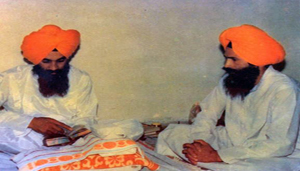 Sukha & Jinda’s letter contextualized Sikh militancy inside of a broader sphere of global defiance against outdated and arbitrary power structures.
Sukha & Jinda’s letter contextualized Sikh militancy inside of a broader sphere of global defiance against outdated and arbitrary power structures.
When nations wake up, even history begins to shiver. During such momentous moments a Banda Bahadur bids farewell to his peace-dwelling and destroys a State of oppression like Sirhind, a Che Guevera turns down a ministership of Cuba, loads a gun on his breast and entrenches against the enemies in the forest of Bolivia, a Nelson Mendela rejects the ideology of apartheid and prefers to spend his life in a dark prison cell.
 Guess what a British Asian family is hitting the reality TV scene … “Meet The Grewals” will begin filming 24/7 on November 4th in the UK. The three-generation family will be filmed for over eight weeks. Their lives will be aired as part of the iconic series, The Family, on Channel 4.
Guess what a British Asian family is hitting the reality TV scene … “Meet The Grewals” will begin filming 24/7 on November 4th in the UK. The three-generation family will be filmed for over eight weeks. Their lives will be aired as part of the iconic series, The Family, on Channel 4.
Director David Clews says: “I think the film captures both the big issues and the intimate moments of family life and I hope everyone will enjoy spending time with the Grewals in the same way I have.”
Yesterday, October 12th, was “Columbus Day” – a day where the United States government honors and celebrates the achievements of Christopher Columbus. For some in the United States, Columbus Day is just another holiday. However, for many individuals and communities – it is a painful reminder that history has forgotten the facts. Christopher Columbus was a hero to some and a villain to others. What his true legacy in the Americas is and to whose expense we celebrate his “discovery” has been called into question. In fact, this notable video below asks us to reconsider why we celebrate Columbus Day and not Indigenous People’s Day.
As you listen to the voices in this video – you may relate to the emotions and words used. As Sikhs, we also won’t allow individuals such as KPS Gill to be named a hero and as humanitarians we won’t perpetuate the heroic notions of Gandhi. Heinous crimes were committed and rights were violated and yet these individuals are still celebrated for their achievements. “With all due respect,” while India [or the U.S.] goes on remembering these so-called heroes, voices in the diaspora ask you to reconsider. It is important that we stand side by side with our sisters and brothers in other communities to pay homage to their history. We must rebuild our global community together.
 Guestblogged by Mewa Singh
Guestblogged by Mewa Singh
This past weekend the North American Sikh Medical and Dental Association (NASMDA) held their 17th annual conference in San Diego, CA. The organization’s website provides a brief description:
Started in the summer of 1992 at Poncos, Pennsylvania, NASMDA has grown to an organization of over 1000 Sikh medical and dental professionals spread across North America. NASMDA strives to provide a platform for Sikh medical and dental professionals to network and interact with each other while promoting the ideals and the mission of Guru Nanak. The members of NASMDA have been actively involved with helping out and supporting various Sikh organizations, young medical students and physicians.[link]
NASMDA provides a platform for Sikhs of various ages to engage in medical exchanges as well as be briefed by various organizations that presented. In all transparency, I made one such presentation, along with other organizations, including Sikh Coalition and more.
The bad economy has worried many of us. From losses on investments to lack of jobs, many of us worry about when the economy will turn around. Interestingly, the group most effected by high unemployment is youth. Last week, the Labor Department reported that youth unemployment stands at 18.2%, nearly twice the national average of 9.8%. The percentage of young people without a job is a staggering 53.4 percent, the highest figure since World War II. Those in the age group of 16-24 are most often the demographic who are hired for entry-level positions and groomed to take over high-level positions in the future.
Moreover, youth of color are disportionately effected by high unemployment. Nearly 40% of black youth (ages 16-19) and 30% of Latino youth (16-19) are unemployed versus only 23% of white youth. As youth of color get older, the gap widens-27.1% of black youth between the ages of 20-24 are unemployed versus 13.1% of white youth in the same age rage. This high unemployment rate for young people is startling because without more job opportunities, young people suffer not only in the short-term, but long-term. Their ability to attend college, afford healthcare, purchase homes, and save for retirement leads to long-term problems.
Rinku Sen and Billy Parish suggest in their joint article, that youth of color are the demographic who can most benefit from the new green jobs proposed by the Obama administration. These new jobs are proposed as a solution to both unemployment and saving our environment.
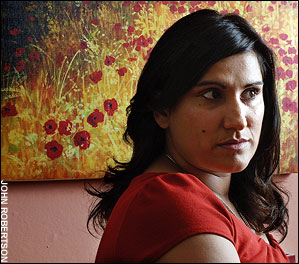 Although I can think of one commenter that may be angered, but Jasvinder Sanghera has just honored with the “Pride of Britain” award for her pioneering work.
Although I can think of one commenter that may be angered, but Jasvinder Sanghera has just honored with the “Pride of Britain” award for her pioneering work.
44-year-old Sanghera was instrumental in forcing the British government to take effective steps against forced marriages. The Foreign and Commonwealth Office now has a Forced Marriage Unit (FMU) which receives about 5,000 calls a year from victims. About 65 per cent of the cases the Unit deals with are Pakistani Muslims, 30 per cent are minors and 15 per cent are boys or men. Every year, the Unit helps bring back to Britain about 400 people trapped in forced marriages overseas.[link]
Tragedies have a way of uniting people. As did 1984 for Sikhs. In the 25 years since, divisions have again formed in the panth. But a great new initiative in Toronto is asking people to put aside the differences that keep us apart and unite in remembering 1984. [Hat tip: Mapleleaf Sikh]

This past week I came across two videos that are just… cool. The videos are not necessarily Sikhi-related but they show everyday Sikhs in their element. This first video was taken at a U2 concert where a lucky fan [Amp Bains] was invited onstage to sing “Sunday Bloody Sunday” with Bono. So lucky.
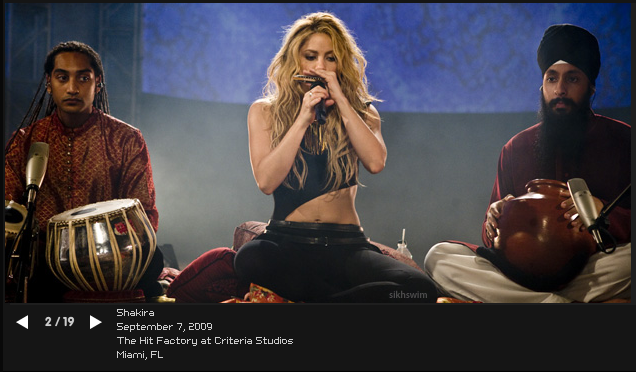
In this second video Shakira performs her new song Gypsy. One of her musicians in this video is Shamsher Singh, a Sikh from Florida (hat tip: Sikh Swim). The video can be viewed here.
A few weeks ago I attended the Sikh Education Conference hosted by the Sikh Research Institute that brought together educators from across North America. One of the presentations focused on the importance of language education. The presenter made it quite clear – teaching young children multiple languages does not confuse them or hinder their development. In fact, research has shown that bilingualism and multilingualism is advantageous in several aspects. Exposure to two or more languages increases critical thinking skills, creativity, and flexibility of the mind in young children.
According to neurobiologists, the human brain is “hardwired” to learn languages as an infant and toddler. Any language learned during this period is stored, literally, in a different part of the brain than language acquired later in life, and in the right environment young children can learn up to four languages without significant slowdown. [link]
It seems, however, than in immigrant communities there is often hesitation around raising children in multilingual homes. The fear is that children will not learn English fast enough which will pose an obstacle to their assimilation into American society. It happens in our own community – young Punjabi children not being able to communicate with their older Punjabi grandparents. There is a language gap and if we consider the importance of oral tradition in our history – you can just imagine how much information is not being communicated and in fact being lost between generations.
Despite tanks rolling into the Guru’s Court (Darbar Sahib)
When a Singh’s head, becomes hunted as a sport (Delhi 1984)
Despite Kaljug sitting on his throne supreme
When the world trembles from tyranny’s regime
And Still We Will Fight
Although hardly a newsflash, last week a Delhi Court acquitted three murderers. Although low-level players in the Government-sponsored pogroms in Delhi and throughout India in November 1984, their acquittal further illustrates that it is Kaljug that reigns supreme in India.

Toronto Star reporter Raveena Aulakh, posing as an expectant mother, is handed bags of pills in an industrial area in Mississauga by Kanwar Bains, news editor of a Punjabi-language newspaper.
Just in case the rest of the world didn’t know what a sorry state Punjab was in with respect to its gender imbalance, there has been two headline reports from Canada’s biggest newspapers in recent weeks. The first deals with the problem in India and the second talks about how the problem has been exported to Canada.
The first from the Globe and Mail entitled “Land of the Rising Son”, examines how India has responded to the decline of female births. There’s two sad learnings from the article. One is that Punjab is still in the worst position with respect to male-female gender ration and the second is that an individual’s level education has does little to reverse generations of discrimination.



